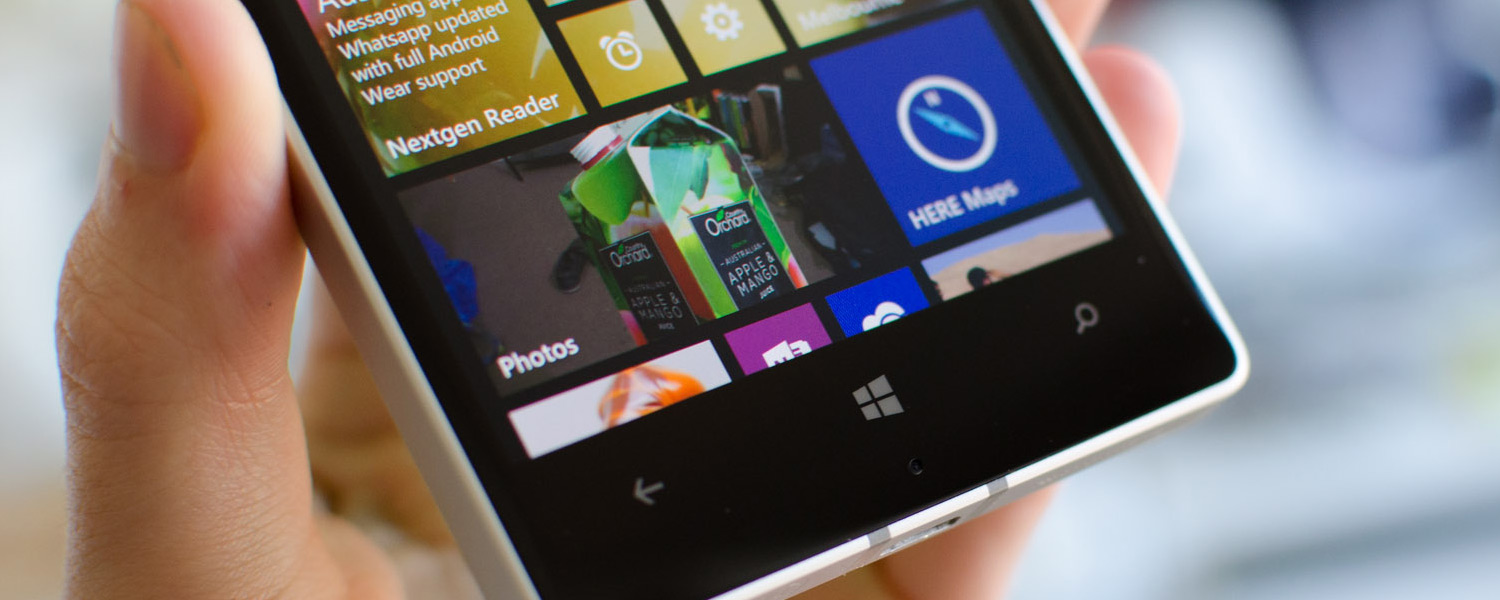Camera: Purely PureView
Once again, Nokia has placed a strong focus on the camera found in their flagship. On paper, it appears Nokia has grabbed the camera module from the Lumia 1520 and chucked it in the Lumia 930, without any major changes. Likely there have been tweaks on the software side, but we're seeing largely the same hardware.
The "PureView" sensor in the Lumia 930 is a 1/2.5" 20-megapixel backside illuminated CMOS (1.1µm pixels), paired with a Zeiss 26mm-equivalent f/2.4 lens with autofocus and optical image stabilization (OIS). Next to the lens on the rear you'll find a single-tone dual-LED flash, which Nokia rates is useful up to 3m. The front-facing camera is a 1.2-megapixel unit with an f/2.4 lens attached.
The sensor has a native 4:3 aspect ratio, although the Lumia 930 shoots 15-megapixel 16:9 shots by default. A quick swap in the settings gives you access to the full sensor, which captures 4992 x 3744 images alongside a 5-megapixel image that you can use for quick uploads to social media. There's also the option to capture DNG RAW images if you plan on editing them later, however keep in mind these occupy much more space than the default compressed JPEGs.
When I first reviewed the Lumia 1520 eight months ago, I was very impressed with its camera, especially in good lighting. The competition has certainly become stiffer since then, with the Samsung Galaxy S5, LG G3, Sony Xperia Z2 and HTC One M8 all focusing on the camera in one way or another. The Lumia 930 camera might not be a cut above this crop like its predecessors were against the competition of the time, but it's still a very capable shooter in nearly all conditions.
When the Lumia 930 gets tone and white balance correct, images produced look accurate, well saturated and generally excellent. Vibrancy is a step behind the top-performing Galaxy S5, however dynamic range is very good, and the exposure automatically selected is almost always perfect for the scene.
Unfortunately, like previous Lumia smartphones, the 930 doesn't always get white balance and tone spot on, which leads to dodgy images around 15% of the time. The issue is especially prevalent when the majority of the subject is green, with the Lumia 930 having a tendency to unnecessarily push the tone well into the green end of the spectrum, affecting the overall color accuracy of the image.
Putting metering issues aside, I was most impressed with how the Lumia 930 manages to take good photos across a range of conditions. Smartphones aren't known for their prowess in cloudy, indoor or dim situations, but the Lumia 930 produces a greater percentage of decent images when the conditions aren't ideal than any other phone I've tested recently.
With 20 megapixels of resolution to work with, there's ample room for reframing and cropping images after they're captured without losing too much detail. The high resolution also means that when downscaled to fit a 1080p display, a supersampling effect is achieved, providing a fantastic level of detail and clarity.
Despite the Lumia 930 delivering crisp photos when downscaled, full resolution crops reveal that the camera actually captures images that are too soft. It appears as though a noise reduction filter is applied after the image is captured, which removes grain at the expense of sharpness. The softness is especially noticeable around the edges of fine tree branches and other hard edges, where you'd normally expect a level of sharpness above what the 930 provides.
Choosing to capture images in RAW DNG mode will stop the filter from being applied, which in turn makes images slightly sharper at full resolution. However, the issue also seems partly related to the actual lens and sensor hardware, which simply capture soft images. Chucking the DNG image into Photoshop and applying a slight sharpening filter can correct the problem, though I would have preferred a non-software solution.
Capturing RAW images also allows you to easily change tone and white balance after images are captured, meaning you can correct the Lumia 930's odd automatic metering. I prefer it when metering is done correctly the first time - in fact I expect it from a flagship system - but the ability to change it afterwards is not something you're blessed with very often from a smartphone camera, which rarely shoot RAW.
The hardware of the Lumia 930 isn't as suited to low-light photography as some of Nokia's previous flagships, packing small 1.1µm pixels in its sensor and a passable f/2.4 lens. Compared directly to the HTC One M8, which is a low-light beast, the Lumia 930's camera hardware captures just one third the light.
Still, with OIS in hand, the Lumia 930 is remarkably capable of decent low-light photography. Throughout my testing I managed to take a number of great night-time images, with the 930 using a combination of high (yet not overly grainy) ISOs and a slow shutter speeds to great effect. With a HTC One-like sensor you'd probably be able to achieve even better results, but hey, I'm not going to complain.
Some aspects of the Lumia 930's camera software are outstanding. Nokia Camera, which is the default app used to take photos, gives you full control over many areas of the camera during the capture process, such as ISO, focus, white balance, and shutter speed. Using this manual mode in the right conditions can lead to some truly fantastic results.
Surprisingly, the Lumia 930 doesn't come with a native HDR mode, meaning you'll need to get an app or 'Lens' to take these sorts of photos. I find it quite strange that neither the Windows Phone stock camera app nor Nokia Camera support HDR, considering many other smartphone cameras will automatically select HDR mode when a scene has varying contrast. With automatic HDR in its camera arsenal, the Lumia 930 would be much more complete.
Video recording on the Lumia 930 tops out at 1080p/30 (no Ultra HD 4K in this device), capturing at 20 Mbps in Main profile H.264. Picture quality is very good, on par with still images and stabilized thanks to OIS. Occasionally the camera would be a little slow at focusing, but other than that, the 930 is a very capable camcorder for the occasional video snap with decent audio to boot.


















